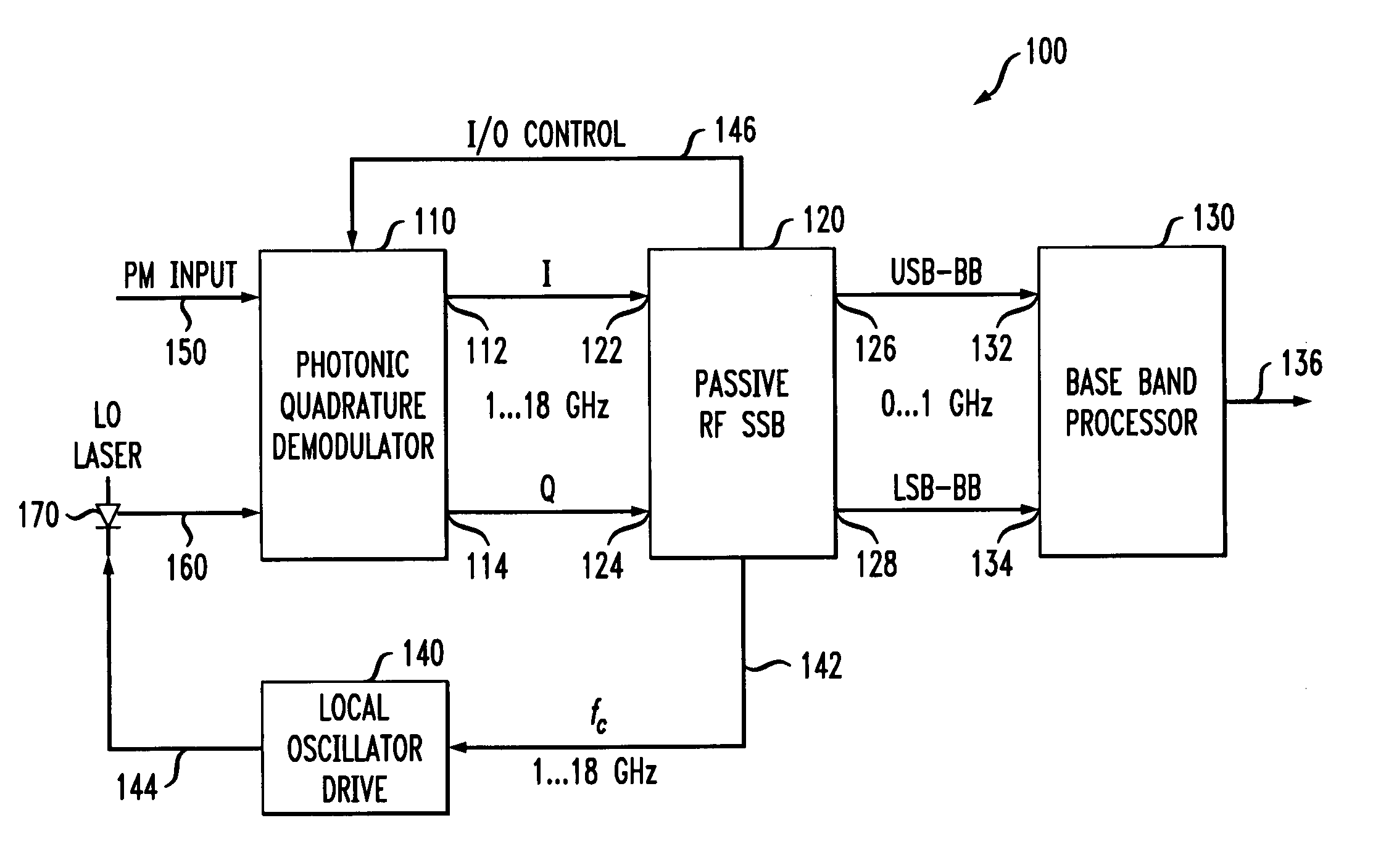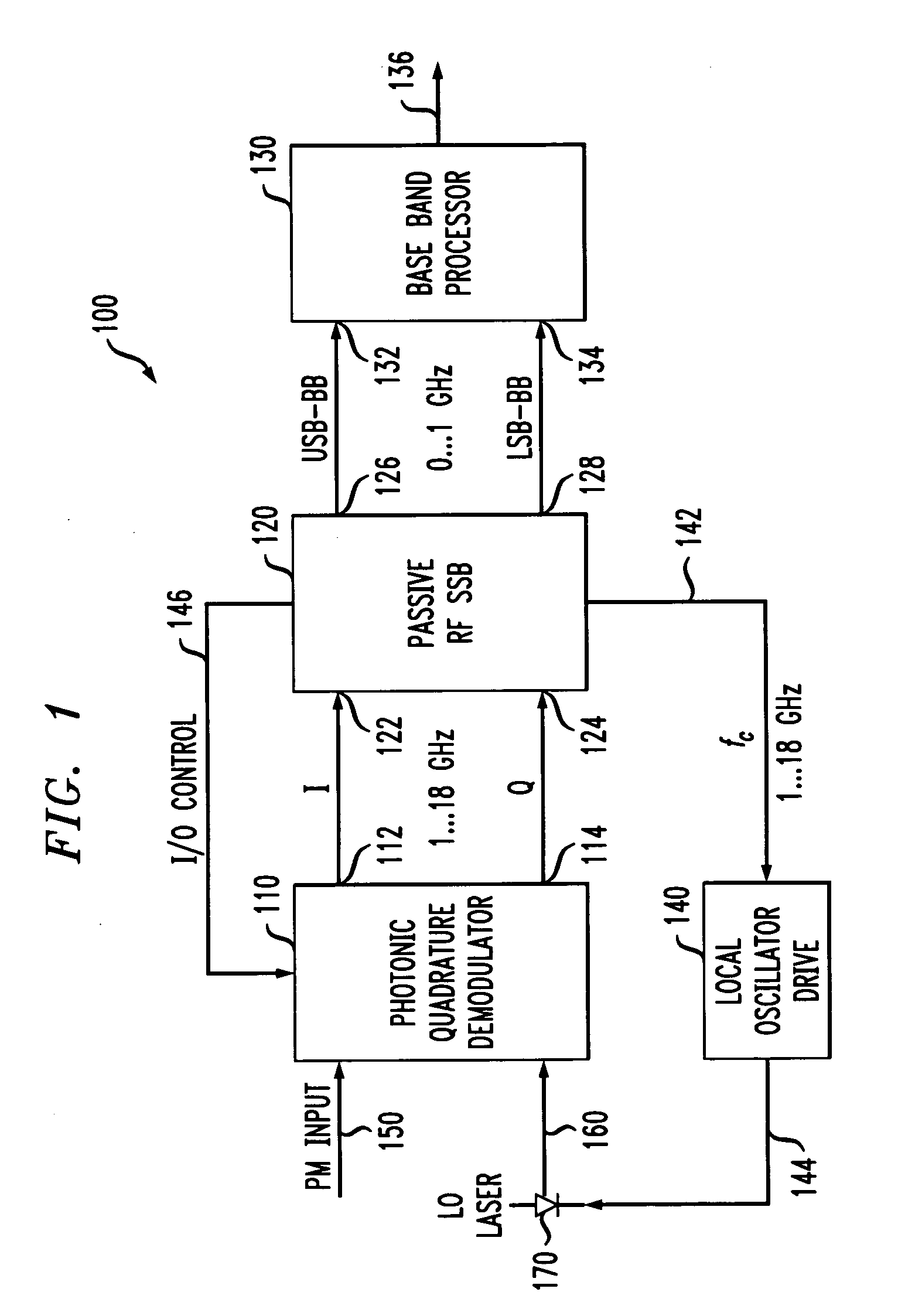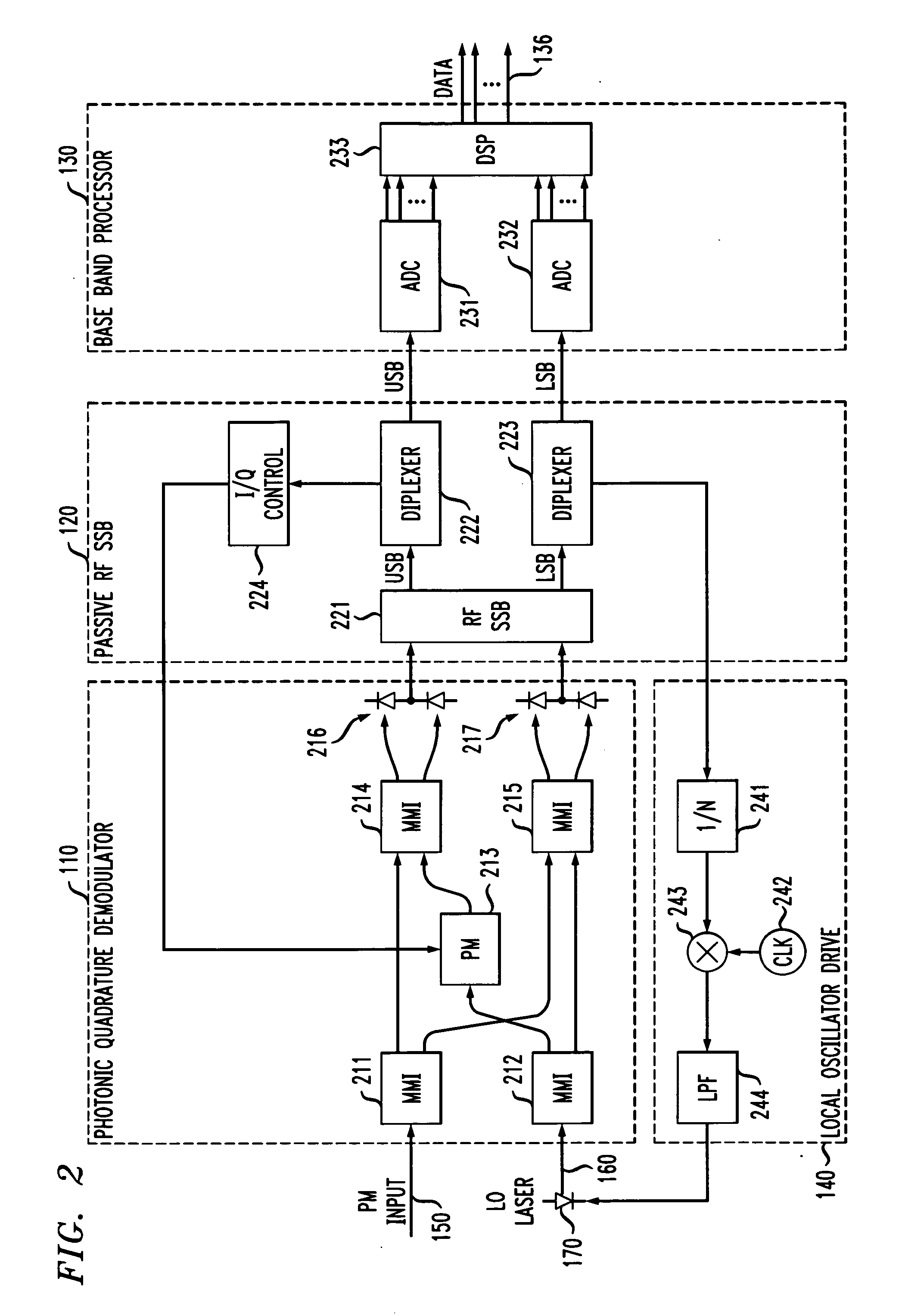Optical heterodyne receiver and method of extracting data from a phase-modulated input optical signal
a phase-modulated input and optical signal technology, applied in the field of optical receivers, can solve the problems of limiting low carrier frequency, and low signal bandwidth, and achieve the effect of reducing the dynamic range of phase tracking, and reducing the frequency of phase tracking
- Summary
- Abstract
- Description
- Claims
- Application Information
AI Technical Summary
Benefits of technology
Problems solved by technology
Method used
Image
Examples
Embodiment Construction
[0019] The optical heterodyne receiver 100 introduces novel features to circumvent the limitations in the aforementioned traditional approaches. First, the optical heterodyne receiver 100 uses a fixed, low, intermediate frequency (IF) frequency band for signal detection. In particular, a coherent heterodyne receiver is used with the local oscillator laser offset by the microwave carrier frequency to align the first side-lobe of the phase modulated optical signal to the local oscillator laser within a predefined IF frequency band, e.g., around 500 MHz. In the illustrated embodiment, only this frequency band is used for data recovery. Second, the optical heterodyne receiver 100 implements a novel signal-processing-based approach to demodulate the transmitted signal in which the signal bandwidth falls within the bandwidth of base band analog-to-digital converters (ADCs) or passband of sigma-delta ADCs. Only the nonlinearity of the photodetector limits the IMD, because of the near-ideal...
PUM
 Login to View More
Login to View More Abstract
Description
Claims
Application Information
 Login to View More
Login to View More - R&D
- Intellectual Property
- Life Sciences
- Materials
- Tech Scout
- Unparalleled Data Quality
- Higher Quality Content
- 60% Fewer Hallucinations
Browse by: Latest US Patents, China's latest patents, Technical Efficacy Thesaurus, Application Domain, Technology Topic, Popular Technical Reports.
© 2025 PatSnap. All rights reserved.Legal|Privacy policy|Modern Slavery Act Transparency Statement|Sitemap|About US| Contact US: help@patsnap.com



